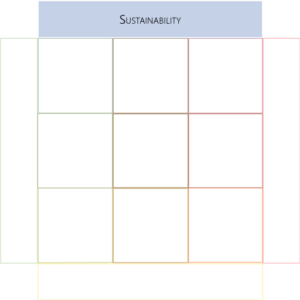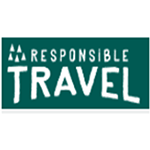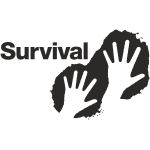
Competitiveness: Balancing Competitiveness and Sustainable Tourism Practices"

COMPETITIVENESS
Be aware of our competitive, comparative, and transitional advantages. Plus our competitors' advantages too!
Key to Success
For Competitiveness: in this section, we would like to make sure that SMTEs should be aware of the following:
- The critical success factors like the quality of infrastructure and services, the level of innovation and technological advancement, and the effectiveness of marketing and branding efforts.
- The role of policies and regulations in promoting a competitive tourism industry includes understanding how government policies can support tourism development.
- Competitiveness involves recognizing the importance of collaboration and cooperation among tourism businesses and destinations, including developing partnerships and networks, sharing knowledge and best practices, and working together to promote common goals and objectives.
Accomplishments
In this step, we’ll:
- Identify as can provide a unique and high-quality experience.
- Consider that we can collaborate with other businesses.
- Highlight as we can understand market demand.
- Find as can implement sustainable tourism practices to remain competitive in destinations.
- List the competitors with whom the business will directly compete.
- Identify the critical threats and opportunities posed by the local environment.
Time-Saving Tools
We’ll complete all sections of this chapter more quickly if we have any of the following handy:
- The tourism destination market plan and strategic plan.
- The sustainable development plan of the tourism destination.
- Our business plan, our business objectives, and our strategic business plan.
- The tourism destination laws are driving tourism.
- The tourism destination inventory and other research.
- The trade travelers and other relevant stakeholders.
- Tourism destination demand research and an analysis of the traveler demand profile.
- Research the potential customers who live in the tourism destination.
- Research the potential customers who live 3 hours away from the tourism destination.
- 2030 Agenda for Sustainable Development
- Sustainable Development Goals (SDGs).
- Sustainable Development Goals strategies (SDG).
- Some sustainable development plan or guide aligned with SDGs.
- Research about the tourism industry.
- Another specific analysis applied to our case.
- All documents could find relevant information.
Competitiveness
Presentation
Tourism can only be sustainable if it is competitive. Otherwise, sustainable businesses and destinations will fail. Similarly, tourism can only be competitive if it is sustainable. This condition will cause the business’s revenue growth and traveler satisfaction to increase.
Small and Medium-sized Tourism Enterprises (SMTEs) must be informed about their competitive, comparative, and transitory advantages. And their advantages in tourism destinations depend on various factors. Here are some of the most important things we should know:
- Traveler satisfaction: SMTEs should aim to provide high-quality traveler service and experiences that meet or exceed their travelers’ expectations.
- Unique Selling Proposition (USP): SMTEs must effectively identify and promote their USPs. The USP could be anything from a particular location, type of accommodation, or experience, to the level of traveler service.
- Pricing: SMTEs should ensure that their pricing is competitive and profitable.
- Marketing: SMTEs must have a strong marketing strategy targeting their desired audience. This can include online marketing through social media platforms and travel review websites.
- Innovation: Staying ahead of the competition requires continuous innovation. SMTEs should constantly seek to improve their products and services, keep up with new trends, and offer unique and exciting experiences to their travelers.
- Partnerships: SMTEs can benefit from partnerships with other local businesses, such as restaurants, tour operators, and accommodation providers. These partnerships can help create a more comprehensive tourism offering and increase the destination’s competitiveness.
Tourism businesses compete and compose internally, at the destination, with other businesses and need to understand how they can help their destination compete with other competitor tourism destinations.
Thinking about our general advantages derived from:
- The business develops (processes, resources, marketing).
- The product/service delivery (price, quality, added value).
- The tourism destination.
- The traveler recognizes the added value.
Thinking about seasonality:
- In low season, what can we do to protect ourselves from contingencies?
- In high season, what can we do to take advantage of the opportunities?
In conclusion, by understanding and focusing on these critical factors, SMTEs can increase their advantages and succeed in a highly competitive industry. Furthermore, SMTEs should prioritize sustainable tourism practices, as travelers increasingly need to support environmentally and socially responsible businesses.
Some of the Tourism Competitiveness Critical Success Factors (CSF)
Social, Environmental, and Economic Sustainability – Tourism products of the tourism destination – Updating the constant changes in the traveler’s demands –
Tourism destination social capital – Processes, services, and the infrastructure adapted to international standards – Inclusion, accessibility, and diversity – Tourism destination Infrastructure –
Location as differentiating factor – Ability to collect data, generate information and knowledge – Information systems application – Efficient processes – trained and qualified human resources.
GUIDING QUESTIONS
How can we promote responsible and sustainable practices throughout our competitiveness? Implementing eco-friendly initiatives and supporting local communities will contribute to small tourism enterprises' long-term success and reputation through our competitiveness.
YScala
A suggestion of guiding questions that are not intended to exhaust the topic:
- Does the proposed product meet a new trend or market need?
- Which processes cannot be performed by our competitors?
- How do our competitors’ prices compare to ours for similar products? Are our prices competitive, and do they reflect the services found here?
- What do we do better than our competitors? What do they do better than we do?
- What distribution channels do we use that our competitors do not? Conversely, what distribution channels do they use that we do not?
- What marketing strategies do we use to attract new travelers or retain existing ones we still need (incl. special promotions, gifts, and more)? Conversely, what marketing strategies do our competitors use to attract new travelers or retain existing ones?
To help us understand the impact of competitiveness on our sustainable tourism business, here are some suggested guiding questions about competitiveness among competing destinations. Which we do not intend to exhaust:
- What unique attractions and experiences make the destination offer to set itself apart from competitors?
- How accessible and well-connected is the destination to major transportation hubs, and what infrastructure improvements are needed to enhance the visitor experience?
- How is the destination proactively managing its resources and environment to ensure long-term sustainability and resilience against over-tourism and other potential threats?
- What strategies are in place to ensure a diverse and high-quality range of accommodations, dining options, and other visitor amenities that cater to different traveler preferences and budgets?
- How effectively are local stakeholders, including government, businesses, and communities, collaborating to promote and develop the destination while ensuring that tourism benefits are equitably distributed?
- What measures are being taken to continuously monitor and improve visitor satisfaction, safety, and overall experience, and how are these insights used to drive destination development and marketing efforts?
Small and Medium-sized Tourism Enterprises (SMTEs) can build strong awareness about their tourism industry by asking these questions and working through the answers to developing capacities, skills, advantages, partnerships, and more.
Offering more information
Besides the 21 guiding questions we’ve provided to help us evaluate and improve our competitiveness, we’ve compiled a list of valuable resources to further our knowledge and understanding of competitiveness. Notably, these resources offer insights into best practices, sustainability, marketing, and more, catering to the needs of tourism professionals and stakeholders. Consequently, by exploring these links, you’ll be better equipped to make informed decisions and create a thriving, competitive, and sustainable destination for travelers from around the world.
World Economic Forum – The World Economic Forum is a non-profit organization that brings together political and business leaders to address global challenges. Linking to their website could provide you with insights into global competitiveness and economic trends.
Harvard Business Review – As a leading business publication, Harvard Business Review offers a wealth of articles and insights on business strategy and competitiveness.
McKinsey & Company – McKinsey & Company is a global management consulting firm that provides insights and advice on various business issues, including competitiveness.
Small Business Administration – For you interested in competitiveness at the small business level, linking to the Small Business Administration’s website could provide you with information and resources on topics such as financing, marketing, and operations.
Bloomberg – As a leading financial news and media company, Bloomberg provides readers with news, analysis, and data on business and economic trends that could be relevant to competitiveness.
As you conclude reading this orientation post, we’d like to invite you to explore the other insightful articles in our Business Tailor 4 Sustainable Tourism Develop Management Tool (BT4-STDM) blog. We invite you to engage with our community, share your perspectives, and contribute to this meaningful conversation by commenting below. Your experiences and ideas can help others in their sustainable tourism development management journey.
Table of Contents
Let your like and recommend this post to improve your audience!
Share this post with friends, colleagues, or anyone else who might be interested.
Comments:
We invite you to engage with our community, share your perspectives, and contribute to this meaningful conversation by commenting below. Your experiences and ideas can help others in their sustainable tourism development management journey.










